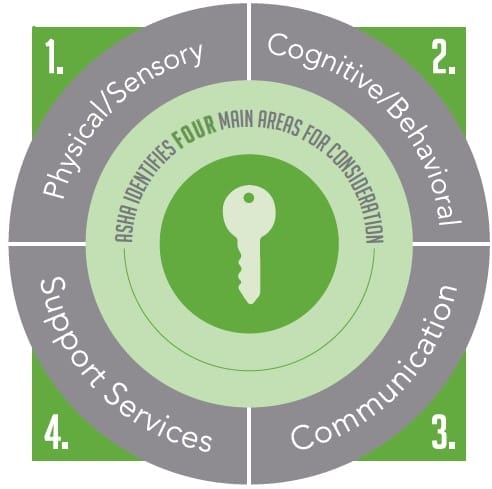
PresenceLearning provides speech and language services via an onsite/online service service delivery model. Together, as a team, onsite speech-language pathologists (SLPs) work with selected students while online SLPs work with others. Determining how to split the workload depends on a number of factors that may include caseloads, existing resources, travel time, and the need for specialists.
Some districts prefer to move their older students to online services to free up time for onsite SLPs to work with early childhood students, whereas others may tap online clinicians for their elementary students. In some districts, we work with charter school students and homebound students. Other districts may need online help for bilingual students or edge cases. In all of these scenarios, online SLPs are integrated across the board.
While the possibilities for integrating telepractice are endless, client candidacy for telepractice is a critical factor to ensure that online therapy is a good fit for each student served. Clinicians from the PresenceLearning network have provided over a million sessions of live, online therapy via our platform, and in our experience, this mode of delivery is appropriate for most students from preschool through grade 12. However, other factors are also at play, including:
- The student’s diagnosis
- The severity of the student’s disability
- The environment (E.g., is there a distraction-free area therapy can take place? Is the technical quality high? Can the frequency and intensity of services be supported?)
- Available support (E.g., how much does an onsite support resource need to be involved?)

The American Speech-Language-Hearing Association identifies four main areas for consideration when determining telepractice as the service delivery model:
- Hearing Ability
- Visual Ability (e.g. ability to see material on a computer monitor)
- Manual Dexterity (e.g. ability to operate a keyboard or mouse)
- Physical Endurance (e.g. sitting tolerance)
Cognitive/Behavioral:
- Level of Cognitive Functioning
- Ability to Maintain Attention (e.g. to a video monitor)
Communication:
- Auditory Comprehension Literacy
- Speech Intelligibility
- Cultural/Linguistic Variables
- Availability of an Interpreter
Support Services:
- Must have internet access for synchronous therapy
- Slow speeds can be an issue; need to consider audio/video quality
- Consider access to tech support: what if there is a problem?
- Consider the role of the primary support person
- Assess the environment; consider lighting, extraneous noise, seating, etc.
The service delivery model for therapy should be as individualized as therapy goals and intervention plans. Identifying students that can reap the benefits of online therapy can give them the necessary tools to succeed in the classroom and beyond.
Dara Rogoff, MS, CCC-SLP, BCS-CL is a Product Line Manager for PresenceLearning, with a focus on the online delivery of speech therapy, occupational therapy, and assessments.




